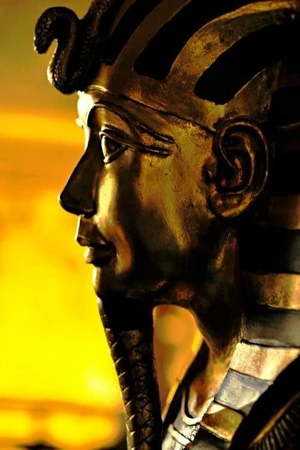Τούθμωσις Β' ο Νόθος
Thutmose, Chebron, Χεβρών
Pharaohs, Eighteenth dynasty of Egypt

Όνομα: Τούθμωσις Ηγεμονικά Ονόματα
Αίγυπτος Ηγεμόνες Αιγύπτου Ηγεμόνες Ελληνιστικής Αιγύπτου Αιγυπτιακή Αυτοκρατορία Ηγεμόνες Αιγυπτιακής Αυτοκρατορίας
>>Αρχαιο-Αιγυπτιακή<< Δυναστεία 0α (0a) Δυναστεία 0β (0b) Δυναστεία 1η (I) Δυναστεία 2η (II)
>>Παλαιο-Αιγυπτιακή<< Δυναστεία 3η (III) Δυναστεία 4η (IV) Δυναστεία 5η (V) Δυναστεία 6η (VI)
>>Πρώτη Ενδιάμεση<< Δυναστεία 7η (VII) Δυναστεία 8η (VIII) Δυναστεία 9η (IX) Δυναστεία 10η (X) Δυναστεία 11α (XIa)
>>Μεσο-Αιγυπτιακή<< Δυναστεία 11β (XIb) Δυναστεία 12η (XII)
>>Δεύτερη Ενδιάμεση<< Δυναστεία 13η (XIII) Δυναστεία 14η (XIV) Δυναστεία 15η (XV) Δυναστεία 16ης (XVI) Δυναστεία 17η (XVII)
>>Υστερο-Αιγυπτιακή (New)<< Δυναστεία 18η (XVIII) Δυναστεία 19η (XIX) Δυναστεία 20η (XX)
>>Τρίτη Ενδιάμεση<< Δυναστεία 21η (XXI) Δυναστεία 22η (XXII) Δυναστεία 23η (XXIII) Δυναστεία 24η (XXIV)
>>Νεο-Αιγυπτιακή (Late)<< Δυναστεία 25η (XXV) Δυναστεία 26η (XXVI) Δυναστεία 27η (XXVII) Δυναστεία 28η (XXVIII) Δυναστεία 29η (XXIX) Δυναστεία 30η (XXX) Δυναστεία 31η (XXXI) Δυναστεία 32η (XXXII) Δυναστεία 33η (XXXIII)
Σουμερία (Sumer) Ηγεμόνες Σουμερίας
Ακκαδία (Akkad) Ηγεμόνες Ακκαδίας
Συρία (Martu) Ηγεμόνες Συρίας
Ισραηλία (Israel)Ηγεμόνες Ισραηλίας
Ιουδαία (Judash) Ηγεμόνες Ιουδαίας
Φοινίκη (Phoenicia) Ηγεμόνες Φοινίκης
Ασσυρία (Assyria) Ηγεμόνες Ασσυρίας
Βαβυλωνία (Babylonia) Ηγεμόνες Βαβυλωνίας
Μιταννία (Mitanni) Ηγεμόνες Μιταννίας
Χετταϊκή Αυτοκρατορία (Hatti) Ηγεμόνες Χετταϊκής Αυτοκρατορίας
Μυκηναϊκή Ελλάδα (Mycenaean Greece) Ηγεμόνες Μυκηναϊκής Ελλάδας
- Αυτοκράτορας (φαραώ) της Αιγύπτου.
- Χρονική Περίοδος Διακυβέρνησης: Υστερο-Αιγυπτιακή Εποχή
- Γέννηση:
- Θάνατος:
Ετυμολογία[]
| της Αιγύπτου
|
|---|
| 18η Δυναστεία XVIII |
|
| Ονόματα Μανέθωνα |
|
Το όνομα "Τούθμωσις" αποτελεί παραφθορά του Αιγυπτιακού ονόματος "Djehuty-mose"
Ονομασία[]
Οι διάφορες ονομασίες τις οποίες έλαβε ή με τις οποίες αναφέρεται (ή ενδεχομένως αναφέρεται) στην ιστορία είναι:
Γενεαλογία[]
- Οίκος: 18η Δυναστεία.
- Πατέρας: [[]],
- Μητέρα:
- Σύζυγος:
- Τέκνα:
Βιογραφία[]
Τα σημαντικότερα ιστορικά γεγονότα της βασιλείας του είναι:
- He obtained a right to the throne through a marriage with his half-sister Hatshepsut.
- He was repelling revolts in Nubia, campaigned in Asia.
Upon Thutmose's coronation, Nubia rebelled against Egyptian rule. According to the tomb autobiography of Ahmose, son of Ebana, Thutmose travelled down the Nile and fought in the battle, personally killing the Nubian king. Upon victory, he had the Nubian king's body hung from the prow of his ship, before he returned to Thebes.
After that campaign, he led a second expedition against Nubia in his third year in the course of which he ordered the canal at the First Cataract (which had been built under Sesostris III of the 12th Dynasty) to be dredged in order to facilitate easier travel upstream from Egypt to Nubia. This helped integrate Nubia into the Egyptian empire. This expedition is mentioned in two separate inscriptions by the king's son Thure.
Year 3, first month of the third season, day 22, under the majesty of the King of Upper and Lower Egypt, Aakheperre who is given life. His Majesty commanded to dig this canal after he found it stopped up with stones [so that] no [ship sailed upon it]; Year 3, first month of the third season, day 22. His Majesty sailed this canal in victory and in the power of his return from overthrowing the wretched Kush.
In the second year of Thutmose's reign, the king cut a stele at Tombos, which records that he built a fortress at Tombos, near the Third Cataract, thus permanently extending the Egyptian military presence, which had previously stopped at Buhen, at the second cataract.
This indicates that he, already, fought a campaign in Syria; hence, his Syrian campaign may be placed at the beginning of his second regnal year.
This second campaign was the farthest north any Egyptian ruler had ever campaigned. Although it has not been found in modern times, he apparently set up a stele when he crossed the Euphrates River. During this campaign, the Syrian princes declared allegiance to Thutmose.
However, after he returned, they discontinued tribute and began fortifying against future incursions.
Thutmose celebrated his victories with an elephant hunt in the area of Niy, near Apamea in Syria, and returned to Egypt with strange tales of the Euphrates, "that inverted water which flows upstream when it ought to be flowing downstream."
The Euphrates was the first major river which the Egyptians had ever encountered which flowed from the North, which was downstream on the Nile, to the south, which was upstream on the Nile. Thus the river became known in Egypt as simply, "inverted water."
Thutmose had to face one more military threat, another rebellion by Nubia in his fourth year.
His influence accordingly expanded even farther south, as an inscription dated to his reign has been found as far south as Kurgus, which was south of the Fourth Cataract.
During his reign, he initiated a number of projects which effectively ended Nubian independence for the next 500 years.
He enlarged a temple to Sesostris III and Khnum, opposite the Nile from Semna.
There are also records of specific religious rites which the viceroy of El-Kab was to have performed in the temples in Nubia in proxy for the king.
He also appointed a man called Turi to the position of viceroy of Cush, also known as the "King's Son of Cush."
With a civilian representative of the king permanently established in Nubia itself, Nubia did not dare to revolt as often as it had and was easily controlled by future Egyptian kings.
Ταφή[]
Οι πληροφορίες που αφορούν τον τάφο και το μομμιοποιημένο σώμα (μούμια) του είναι:
- Burial place: most probably the tomb KV42 in the Valley of the Kings.
- The king’s mummy was discovered in the DB320 cache at Deir el-Bahari.
Χρονολογία[]
Οι διάφορες χρονολογίες της βασιλείας του από διακεκριμμένους Αιγυπτιολόγους, αρχαίους και νεώτερους, είναι:
- Ο Μανέθωνας (Manethon) (through Josepus, Theophilus, Eusebius) assigned to him a reign of 13 yrs.
- 1518-1503 (Wente)
- 1516-1504 (Redford)
- 1497-1489 (Parker)
- 1494-1490 (Hornung)
- 1493-1479 (Grimal)
- 1492-1479 (Málek, Arnold, von Beckerath, Shaw, Kitchen)
- 1491-1479 (Dodson)
- 1482-1479 (Krauss, Murnane, Aldred)
- 1470-1467 (Helck)
- 1472-1466 (NarmerSite)
Υποσημειώσεις[]
Εσωτερική Αρθρογραφία[]
- 18η Δυναστεία (XVIII)
- Ηγεμόνες Αρχαίας Αιγύπτου
- Ηγεμόνες Αιγύπτου
- Αίγυπτος
- Αρχαία Αίγυπτος
- Αιγυπτιακή Αυτοκρατορία
- Αιγύπτιοι
- Αιγύπτιοι Θεοί
Βιβλιογραφία[]
Ιστογραφία[]
|
Αν και θα βρείτε εξακριβωμένες πληροφορίες "Οι πληροφορίες αυτές μπορεί πρόσφατα Πρέπει να λάβετε υπ' όψη ότι Επίσης, |
- Μην κάνετε χρήση του περιεχομένου της παρούσας εγκυκλοπαίδειας
αν διαφωνείτε με όσα αναγράφονται σε αυτήν
- Όχι, στις διαφημίσεις που περιέχουν απαράδεκτο περιεχόμενο (άσεμνες εικόνες, ροζ αγγελίες κλπ.)
